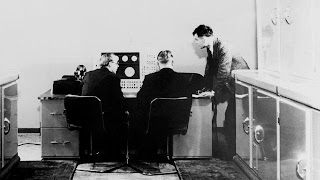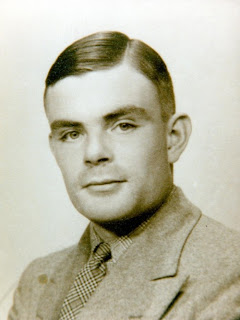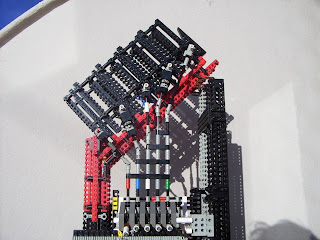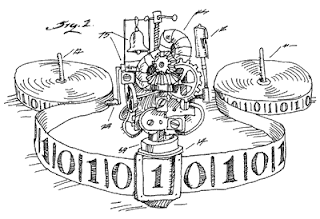Alan Mathison Turing, better known as Alan Turing was a researcher first modern digital computer was born on June 23, 1912 and died on June 7, 1954 at the age of 41 years.
Alan Turing was the first who thought of using computers for various purposes. He said that the computer can run many programs. He also gives an idea of the Turing machine, a machine that can run a set of commands at once.
Turing machine is a theoretical computing model invented by Alan Turing, serves as an ideal model to perform mathematical calculations. Although the ideal model was introduced before the actual computer is built, this model is still accepted among computer science as an appropriate computer model to determine whether a function can be completed by the computer or not (specify Computable function). Turing machine is famous for the phrase "Whatever can be done by a Turing machine can certainly be done by computer."
A Turing machine consists of a row of ribbons are composed of cells that can move back and forth, the active component of the read and write tape which has the status of the calculation and can change / write in the active cell is in the band before, and a set of instructions on how components of the read and write has to be modify the active cell on the tape, as well as how to move the ribbon. At each step in computing, this machine will be able to change the contents of the active cell, changing the status of the components of the read and write, and change the position left or ribbon.
In 1936, Alan went to Princeton University in America and then returned to England in 1938. There he began working in secret as part-time for British cryptanalytic department, Government Code and Cypher School. At the time of World War II broke out he took a full-time jobs at its headquarters, Bletchley Park.
Here he plays an important role in deciphering messages encrypted by the German Enigma machine, which provide critical intelligence to the Allies. He led a team that designed a machine known as the Bombe that successfully translate the German message. He became famous and somewhat eccentric figure in Bletchley.
After the second world war finished, Alan Turing turns his mind to the development of machines that will process the information logically. He first worked for the National Physical Laboratory (1945-1948). The plan was rejected by his colleagues and laboratory proposed for the project to be the first to lose to design a digital computer.
In 1949, he went to Manchester University where he led the computing laboratory and developed a machine that helps to shape the foundations of the field of artificial intelligence. In 1951 he was elected as a member of the Royal Society.
In 1952, Turing was arrested and tried for the crime of homosexuality. To avoid jail, he received injections of estrogen for a year, which is intended to neutralize his libido. At that time, homosexuality is considered a security risk because they are open to blackmail. Turing security clearances withdrawn, meaning he could no longer work for GCHQ, the post-war successor to Bletchley Park. This made Alan Turing commit to suicide on June 7, 1954.
I hope this Alan Turing Biography can make people give some better information's about his life.









